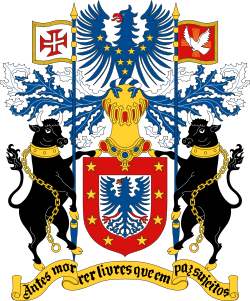Azores, rich historical heritage.
The Azores are an archipelago, formed by nine islands, discovered and populated by portuguese in the early fifteenth century. In Azorean history, it is unknown the precise date on which the archipelago was discovered, however, it is believed that São Miguel and Santa Maria were the first islands to be recognized, around 1427, by the Portuguese navigator Diogo de Silves.
Late, on August 15, 1432, the day of the Assumption of Our Lady, the navigator Gonçalo Velho Cabral and his crew disembark on the island they named Santa Maria as a tribute to the Holy Virgin.
The first settlement of the island of Santa Maria, as well as the Azores, took place in 1439, and the first settlers settled in Praia dos Lobos, along the Ribeira do Capitão.
Later, in order to boost the settlement of the island, João Soares de Albergaria, nephew of Gonçalo Velho (first Captain-Donatário de Santa Maria) brings continental families, namely Algarvias, to the island, which has registered a great development of it.
As far as we know, São Miguel was populated, from 1444, by Gonçalo Velho Cabral, who landed his villagers in the place of the Povoação (from Extremadura, Alto Alentejo, Algarve, France). These, in turn, and as time went by, spread throughout the coastal zone, in order to obtain the best accessibility, best conditions and living facilities.
Due to the favored geographical position of the islands in the central Atlantic, they quickly contributed to a strong economic expansion in São Miguel, through the production of wheat that was exported to supply the Portuguese garrisons in North Africa, as well as the manufacture of cane sugar. Later, the immense reproduction of oranges, through the export to the English market, came to bring wealth to the island.
The third island to be discovered, initially recognized by Ilha de Jesus Cristo, currently has the name of Terceira, located in the Central Group of the archipelago. Terceira Island began its settlement around 1450.
The Third represents an important point in the history of Portugal, because when King Philip II of Spain, in 1580, intended to succeed the Portuguese throne, the small island rigidly took the party of D. António, prior of Crato, pretender to the throne. However, after two years and after violent fighting, Terceira does not resist a new Spanish attack and lets itself be occupied by their sovereignty.
In the first half of the 19th century, the Third assumes a major role in Lusitanian history, supporting the liberal cause in 1820. In 1828, the absolutists were dominated at the end of a battle fought in the bay of Vila da Praia, where miguelistas troops were defeated trying to leave the island. The Village of Praia goes through this, to be called Praia da Vitória and Angra, for the gift of sacrifice and patriotism that the Third Party demonstrated, receiving the designation of Angra do Heroísmo.
The island of Graciosa, as it closes close to Terceira Island, is believed to have been first sighted in 1450 and began its settlement on an indeterminate date. Since the beginning, Graciosa was mainly agricultural, exporting wheat, barley, wine and brandy, favoring its trade with Terceira Island, which had a vast port frequented by large ships, an important economic and administrative center for the Azores.
The island of São Jorge is unknown in its date of discovery and settlement, however, in 1439 there is the first known reference of the island. By 1443, the island was already inhabited and its economy was based on vines and wheat production, as well as the pastel and urzela that were exported to Flanders and European countries.
The island of Pico, the settlement began around the year 1460. Its inhabitants were dedicated to wheat production and the export of pastel. Another important source of wealth on this island was the hunt for the sperm whale, currently, by force of international laws of protection to that species, this activity is only a great memory of the “Sea Wolves”, proudly portrayed in the Whalers Museum, in Lajes do Pico.
The island of Faial, was discovered in the first half of the 15th century. The agriculture and export of pastel are the main activities of the island. In 1833, Horta was elevated to the city.
The last two islands to be discovered were Flores and Corvo, belonging to the Western Group, by Diogo Teive and his son João Teive, around the year 1452. Due to the large abundance of flowers that covered the entire island, it adopted the name that is known today: Flores Island.
In the year 1470, the Flemish fidalgo Wilhelm Van der Haegen is attributed the beginning of the settlement, in the Ribeira da Cruz Valley. Due to the distance of the island in relation to the others, the same abandoned it, then going to settle on the island of São Jorge. Beginning of the sixteenth century, new development is given to the settlement of the island, namely, with the production of wheat, barley, corn and vegetables, products designated only for domestic consumption.


